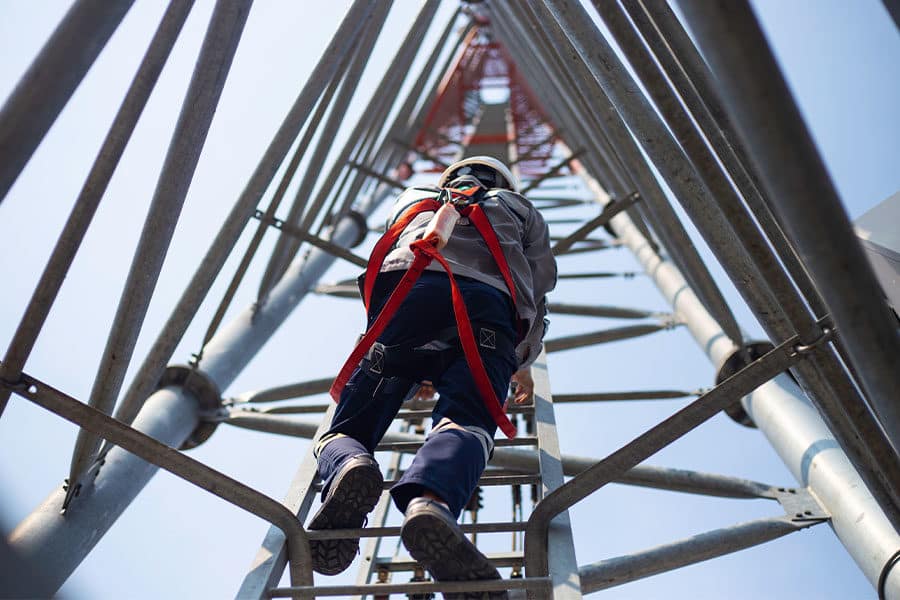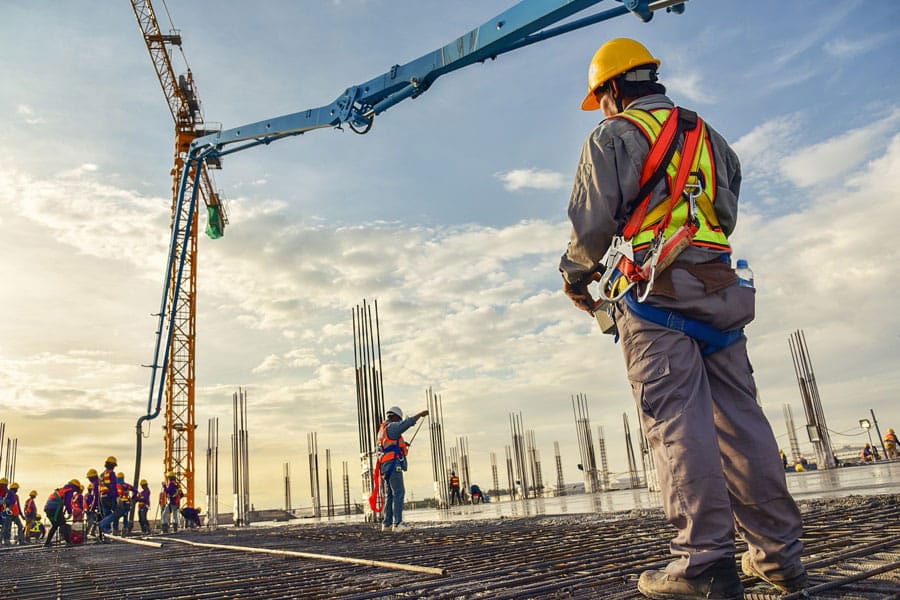In 2020, China State Construction Engineering Corp. opened the first 5G intelligent construction site in the country, able to support technologies like health analysis for workers and real-time site monitoring using dual 360-degree video cameras.
The year before, in Munich, Germany, South Korean conglomerate Doosan relied on 5G—along with machine guidance, real-time diagnostics and a full gauge display—to operate an excavator from 5,200 miles away in Incheon, South Korea.
These are two of the more dramatic ways 5G technology has already been used in construction. But should the typical construction firm—or even the largest ones—get excited about implementing new capabilities on sites as the network is built out?
Not just yet.
Speedy, responsive, connective 5G
Let’s start by unraveling what 5G is—and what it can do. Just as it sounds, 5G is the fifth-generation mobile network, designed to connect people, machines, objects and devices. It’s known for three key attributes: faster speed, lower latency and massive network capacity.
First, consider speed. 5G can reach 10 gigabits per second—up to 100 times faster than 4G. That two-hour movie that used to take half an hour to download on 4G LTE? You should have it in 35 seconds on 5G, according to Lifewire.com.
But latency—the time between sending and receiving communication—is even more impressive. 5G requires a minimum latency of just four milliseconds, but could drop as low as 1 millisecond, or 1/1000 of a second. In other words, instantaneous has arrived.
One other critical benefit is massive machine type communications (MTC), where large numbers of devices can communicate with each other without human intervention. “5G offers connectivity density of up to a million devices per square kilometer, with better energy efficiency compared to 4G,” said Dan Cunliffe, managing director, Pangea Connected, London. “So, you’ve got this triangle of 5G—much faster, way better latency and super high amounts of connectivity,” he said.
Then there’s another advantage known as network slicing. Slicing lets communication service providers divide up the network to meet the frequency and bandwidth requirements of uses like streaming video and Internet of Things (IoT) without issues.
5G possibilities in construction
It’s not hard to imagine how 5G could transform a construction jobsite. Reliably accelerating transmission of visual data would let project managers, contractors and trades monitor work in progress and compare it against building information modeling in real time.
And instead of depending on a handheld device or tablet to crunch calculations for 3D images, ultra-low latency would allow instant access to data-intensive apps in the cloud. That would give owners, project managers, architects and engineers the information necessary for fast, well-informed decisions.
“You can involve brighter minds on your construction site without having people there physically,” Cunliffe said.
With scalable coverage of an area, construction firms could monitor the health, location, status and specs of people and objects to track compliance and promote supply chain efficiency. Predictive maintenance would also let operators know about potential failures before they happen.
“Is this piece of equipment that I’m about to use close to the breaking point? Does it present a risk to the person using it? If operators can learn about tolerances and the vibration or temperatures equipment has been through, they can predict problems before they arise,” Cunliffe said.
The barriers to entry
Despite the possibilities, three issues stand in the way of implementing 5G on a typical construction site and unleashing the capabilities it supports.
Data security is always a concern. But 5G increases the risk because the network is based primarily on software rather than hardware. That means even more data needed to secure connections, applications and devices that use it.
A more immediate concern is the investment required to get adequate 5G coverage on a construction site. “You need some pretty serious infrastructure to make that full triangle happen,” Cunliffe explained. “Getting that significant investment in proper coverage is what’s holding 5G back.”
Mike Ernst, vice president of insights and innovation at Ryan Cos. in Chicago, agreed with Cunliffe. “Trying to use 5G in a building under construction gets very difficult,” he said. “We’d almost need micro transmitters on all the floors. 5G isn’t to the point yet where it can handle the range and flexibility of a dynamic environment.”
[ALSO ON BUILT: Bluebeam’s Contribution to Environmental Sustainability in 2020]
That’s exacerbated by a critical issue that may not have an easy solution—5G signals have difficulty passing through some materials typically used in construction, like concrete, steel and treated glass.
“We definitely have a lot of technologies on our jobsites that could leverage 5G, mostly data-rich ones like streaming video,” Ernst said. “That would provide transparency to multiple audiences and process information on what’s actually happening on the project, including environmental conditions. But we’ve struggled to make that scalable.”
“Jobsites are in flux and they’re not necessarily geared toward having a good, strong internet connection from day one,” Ernst explained. “While I love the quickness of 5G and its ability to move a lot of data, I hate its range. I feel if I put a piece of paper up, it wouldn’t be able to get a signal through.”
Ernst said that Ryan Companies uses static cameras that watch the same view all the time, but also cameras with computer vision that can read what’s going on—down to whether workers are wearing safety glasses and a hard hat or how many trades are on site at a time. Ernst would like to extend that to regular laser scanning and instantaneous upload to highlight site conditions and smooth coordination between trades.
But for now, except under controlled circumstances to showcase capabilities, the reality of 5G is nowhere near its promise. When the two finally align, however, the possibilities will be amazing.
















